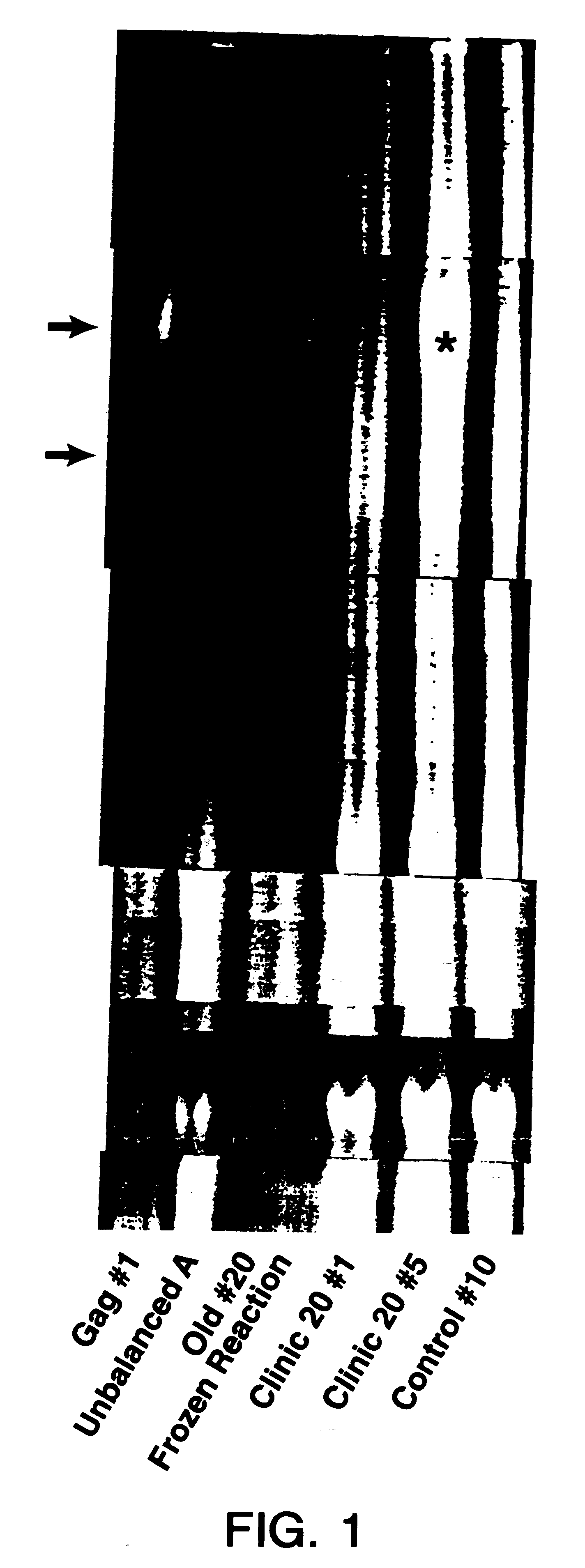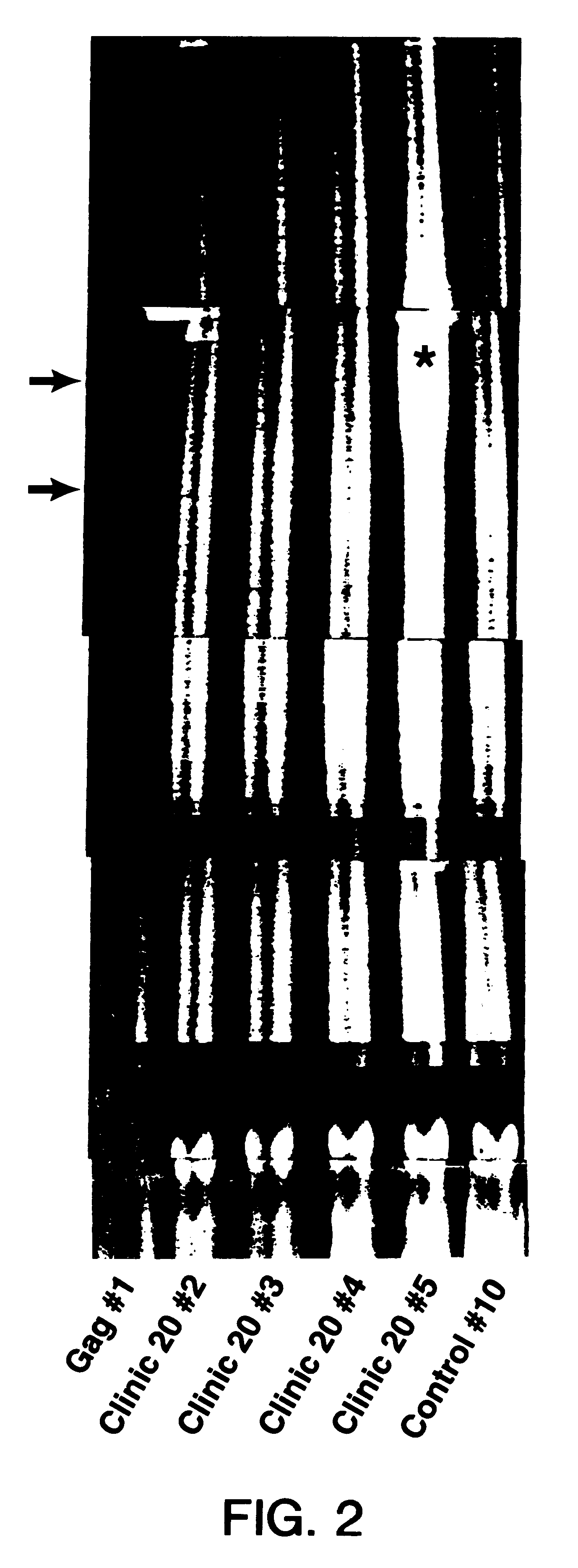Method for the fluorescent detection of a DNA sequence in real time
a dna sequence and real-time detection technology, applied in the field of real-time detection of dna sequences using fluorescence, can solve the problems of delay for autoradiographic exposure time, short useful life of probes, and inability to detect dna sequences in real-tim
- Summary
- Abstract
- Description
- Claims
- Application Information
AI Technical Summary
Problems solved by technology
Method used
Image
Examples
Embodiment Construction
Cell Lysates
Samples were prepared as previously described [Kumar et al., AIDS Research and Human Retroviruses 5, 345-353 (1989)]. Clinical samples and HIV-1 and human T cell leukemia virus (HTLV-1) infected cells were handled in a Biological Safety level 3 laboratory following NIH safety guidelines. The T lymphocyte cell line H9 was used as a negative control in some experiments. Most clinical samples were peripheral blood mononuclear cells, separated from heparinized blood samples. The cells were viably cryopreserved in a controlled-rate freezer and stored at -70.degree. C. DNA substrates for PCR analysis were prepared by washing cells in phosphate-buffered saline (PBS), pH 7.5, three times, followed by suspending the cells in cold distilled water at the desired concentration. For the PCR reaction the cells were suspended at 1-5.times.10.sup.6 cells per ml. Cells were lysed, and virus was inactivated by heating at 95.degree. C. for 20 minutes. Lysates were stored at -20.degree. C.
D...
PUM
| Property | Measurement | Unit |
|---|---|---|
| Size | aaaaa | aaaaa |
| Fluorescence | aaaaa | aaaaa |
Abstract
Description
Claims
Application Information
 Login to View More
Login to View More - R&D
- Intellectual Property
- Life Sciences
- Materials
- Tech Scout
- Unparalleled Data Quality
- Higher Quality Content
- 60% Fewer Hallucinations
Browse by: Latest US Patents, China's latest patents, Technical Efficacy Thesaurus, Application Domain, Technology Topic, Popular Technical Reports.
© 2025 PatSnap. All rights reserved.Legal|Privacy policy|Modern Slavery Act Transparency Statement|Sitemap|About US| Contact US: help@patsnap.com



